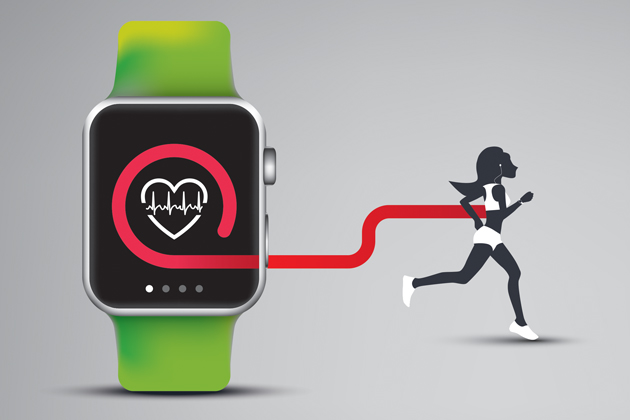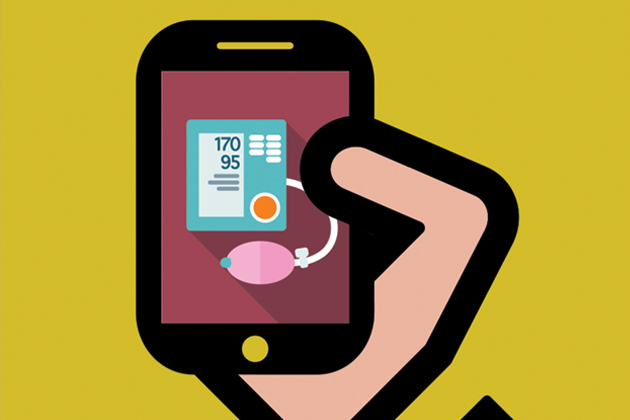
Health care is on the cusp of a diagnostic revolution. With recent advances in life science technology, researchers and health care entrepreneurs are developing novel digital tools for predicting and preventing disease and, in the process, transforming consumer and patient access to personalized health information.
New technology is impacting the diagnosis and treatment of a broad array of medical conditions. Wearable devices that monitor individuals for health issues are rapidly gaining popularity. The Apple Watch, for example, has an optical sensor that is designed to detect heart rhythm changes and notify wearers of possible atrial fibrillation. Smartphone-based applications allow parents to listen to a fetal heartbeat at any time. Direct-to-consumer diagnostic tests and applications are also proliferating, with companies offering personal genomic testing that profiles a person’s genetic risk for certain diseases, and analytical tests that use artificial intelligence to diagnose everything from cancer to the common flu. Clinical-grade technology is also helping health care providers treat their patients. Pacemakers can now send real-time data to doctors, allowing immediate medical intervention should an issue arise. Health care providers have adopted text-messaging bots to contact surgery patients daily, providing post-care information and encouraging compliance with prescribed therapies after the operation. In light of the ever-growing availability of these tools, experts predict a future in which individuals benefit from near-continuous health monitoring, allowing patients and doctors to detect basic health problems and pursue preventive care before medical crises develop.
The appeal of these new diagnostic and informational tools is clear. Diagnosing a condition traditionally requires costly, time-consuming tests and multiple doctor visits. Diagnostics procedures, such as imaging, biopsies, surgery and blood draws, often require patients to be physically present at a hospital or medical facility and can be relatively invasive. While often critical, these methods also have significant processing wait times and reduce direct patient access to personal health care information. New models of diagnostic care have the potential to improve data access as well as efficiency, leading to better clinical decision-making and outcomes and lower costs.
Risks of the Diagnostic Revolution
As with all emerging technology, however, these innovative diagnostic tools come with risk. For example, although beyond the scope of this article, cybersecurity and data privacy are an ever-present and increasing concern, as is compliance with patient data protection laws and regulations like HIPAA.
Another risk is that digital health tools and devices may generate inaccurate information that causes consumers, patients and physicians to make life-altering decisions that substantially impact a person’s health. False positives could potentially cause anxiety and unnecessary interventions, such as changes in medication or treatment plans that, in turn, could increase the risk of adverse health consequences. Meanwhile, false negatives can prevent patients from seeking care when it is truly needed. These errors can become more likely—and more severe—when the condition at issue is rare.
The health care industry is now facing increased regulatory scrutiny and litigation arising from these risks. One of the most notable recent examples is Theranos, the Silicon Valley startup founded by entrepreneur Elizabeth Holmes, who promised a product that could run hundreds of diagnostic tests using a single drop of blood from a finger prick. Theranos ran afoul of numerous government regulations and faced investor and consumer fraud lawsuits after researchers discovered that its signature product, the Edison device, could not run most of the tests the company had promised, nor could it do so with a single drop of blood, as claimed. As a result, tens of thousands of Edison results from 2014 to 2015 were voided, and patients who may have relied on the erroneous information were left to wonder whether subsequent health decisions were correct.
Indeed, a widely-circulated medical report followed one patient whose doctor switched his blood thinner medication after receiving inaccurate blood coagulation test results from Theranos following heart surgery. These results were ultimately proven inaccurate, and a secondary procedure conducted to remove blood from around the patient’s heart may have been unnecessary.
DNA testing company 23andMe has also been the subject of recent government scrutiny and litigation after claiming—without any analytical or clinical validation—that its genetic tests provided accurate screenings for medical conditions, drug responses and carrier status. The FDA subsequently issued a warning letter to the company, expressing concern that consumers who received erroneous test results might take drastic steps like as prophylactic breast removal when told they had markers for breast cancer.
Other companies have gotten into trouble for supplying inaccurate health information, including the diagnostic testing company Aura Labs, which sold an Instant Blood Pressure (IBP) mobile application for Android and Apple devices that the company marketed as capable of providing readings as accurate as a traditional blood pressure cuff. When this was later proven false, the Federal Trade Commission fined the company nearly $600,000, noting the danger to consumers who relied on false readings. Fitbit is facing a similar consumer fraud class action in which plaintiffs allege that its PurePulse-equipped wearable device, a heart-rate monitor marketed as providing accurate heart readings during exercise, consistently undercounts pulses, which could be an issue for patients with heart problems.
Product Liability Implications
These novel diagnostic and informational tools pose complicated, nuanced product liability issues. To date, the legal consequences for companies selling digital applications and diagnostic devices have mainly focused on regulatory shortcomings and allegedly fraudulent marketing, securities fraud and other claims based on company statements about the efficacy of their products. But companies should expect and prepare for torts-based claims in the future, especially where the digital test results provided precede a significant health event. Indeed, Theranos has already faced intentional tort claims for battery and medical battery for inducing patients to submit to blood draws under false pretenses—i.e., that the Edison test was able to function accurately. These claims are still in their infancy, but it is likely only a matter of time before litigants use similar scenarios to support product liability claims.

A threshold question that must be answered before determining the product liability risks of emerging health technology is “What is a product?” The definition of “product” in the product liability context is famously vague. Certain goods in the new diagnostic space—like wearables equipped with heart monitoring—are clearly tangible products in the commonly understood sense because they are physical items that are sold by a corporation to a consumer. Other, less tangible technological developments—such as fetal heartbeat monitoring applications—do not fit as comfortably within the traditional paradigm of what makes something a product rather than a service.
The way in which courts have grappled with other intangible products, such as computer software, may offer some guidance for how apps and health information may be treated in future products liability lawsuits. Many courts, including the state and federal districts of Massachusetts, Illinois, New York and California, have adopted the “predominant factor” test, in which the court determines whether a transaction is mainly for goods or for services. For instance, the Northern District of California held that technology should be considered a good rather than a service in instances where it is standardized, mass-produced, and widely available. Under this rubric, the sale or transfer of medical and health information in an application that is widely available to smartphone users would likely be considered a product, and thus be subject to product liability claims.
Product Liability Framework
After clearing the “product” hurdle, the next consideration is how to analyze these new tools within the product liability framework. In the United States, product liability theories generally fall within two regimes: strict liability and negligence. Under a strict liability or “no fault” liability regime, a defendant faces liability for injuries or damages that result from defects in their product, regardless of whether the defect is the defendant’s fault; the main policy goal is to compensate the plaintiff. Under a negligence scheme, a defendant will be held liable if a product is defective specifically due to the defendant’s negligence and the defect causes injuries or damages.
Despite these differing standards, plaintiffs traditionally assert the same three theories of liability under both schemes: 1) design defect, in which a plaintiff alleges an inherent flaw in the design of a product that caused injury; 2) manufacturing defect, in which a plaintiff alleges an unintended departure from the product’s design caused injury; and 3) failure-to-warn, in which a plaintiff alleges that the defendant did not adequately alert them about a foreseeable risk.
A plaintiff’s arguments under strict liability theories are relatively straightforward. Typically, the plaintiff must show: 1) there was an unreasonably dangerous defect in the product that, 2) existed when the product left the defendant’s control, and 3) caused an injury to the plaintiff. Take, for instance, heart-monitoring wearables. In very general terms, a potential theory could be that the product had an unreasonably dangerous defect in undercounting an individual’s pulse. This could be related to an inherently defective design—a defect that occurred during the manufacturing process—or a failure to warn that reliance on an inaccurate reading could lead to adverse health consequences. The plaintiff might further allege that tachycardia due to exercise caused cardiac arrest or other heart events.
By contrast, a negligence-based argument requires showing that: 1) the defendant had a duty to create a product without defects, 2) the defendant breached its duty by making a defective product (whether the defect stemmed from an inherently defective design, the manufacturing process, or a failure to warn against a foreseeable injury), and 3) the defect caused the plaintiff’s injuries. In the context of genetic testing, a plaintiff might argue that a genetics company has a duty to create a product that gives accurate diagnoses and disease risk profiles. In the event of a false negative, where the test fails to detect a medical condition, the plaintiff would have to show that the defendant knew about a product defect that caused inaccurate results. This might be done by alleging that the defendant did not scientifically or clinically assess the veracity of its tests, and thus knowingly subjected consumers to potentially inaccurate tests. To prove damages, a plaintiff might argue that, if the test gave accurate results, the patient would not have delayed treatment and thus would not have suffered injuries related to that delay.
Determining Liability
The final issue to consider is who is liable for injuries caused by new diagnostic or informational tools. Under traditional product liability theories, all “sellers” in the chain of distribution could potentially be liable for injuries arising under strict liability and negligence theories. This potentially includes all those responsible for the design, manufacture, distribution and sale of the product. In the context of digital applications, such as an application that monitors an implanted medical device like a pacemaker, the potential pool of defendants could be much greater, including not only traditional sellers, but also the software developer and the manufacturer of the smartphone or device on which the application operates.
The diagnostic revolution presents unique product liability challenges to developers of innovative technologies. There are novel issues to consider when determining liability and companies should be aware of and plan for the eventuality of frequent product liability claims.
